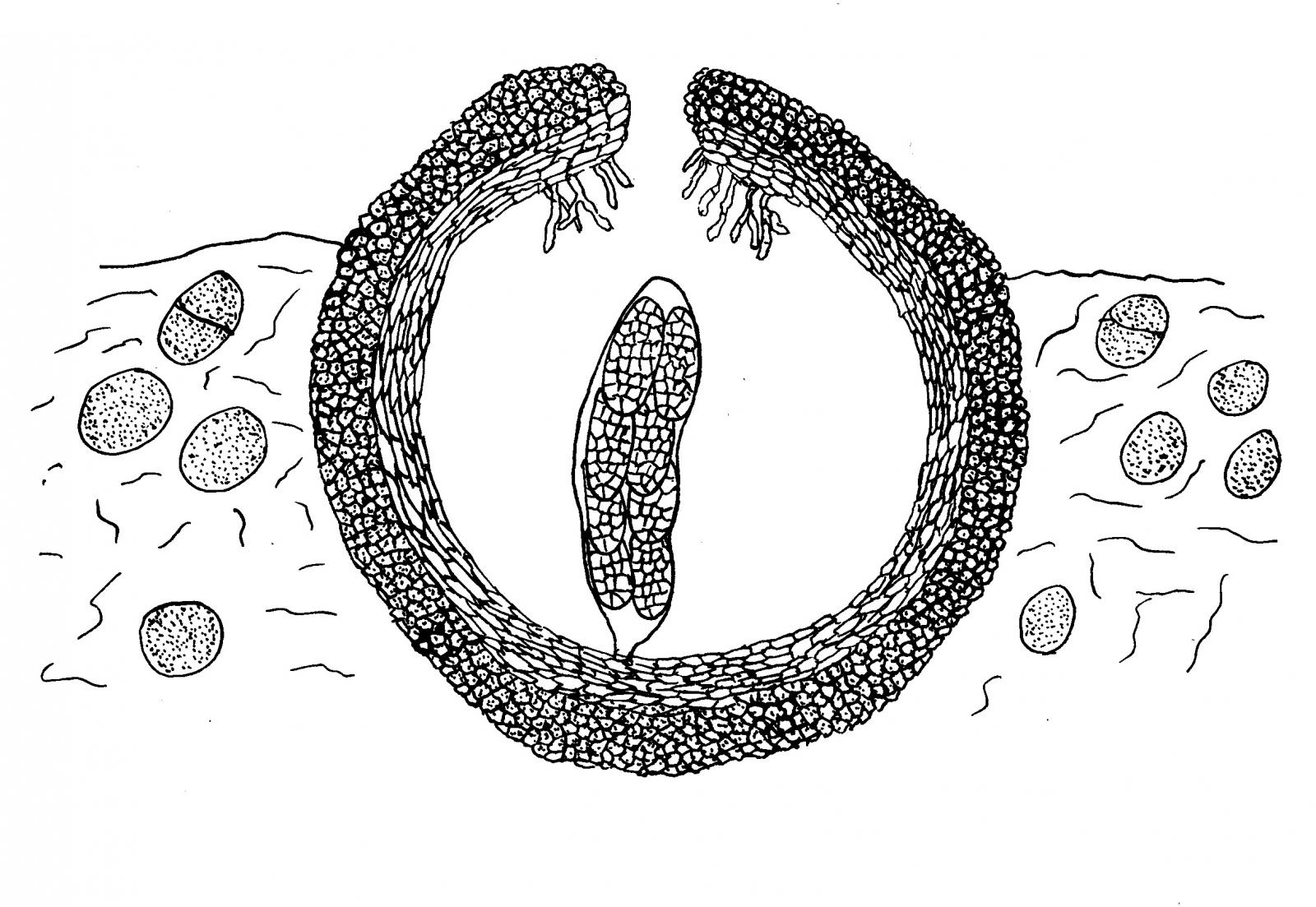
Consortium of Lichen Herbaria
- building a Global Consortium of Bryophytes and Lichens as keystones of cryptobiotic communities -
- Home
- Search
- Images
- Species Checklists
- US States: O-Z >
- US National Parks
- Central America
- South America
- US National Parks
- Southern Subpolar Region
|
|
|
|
Family: Verrucariaceae
[Amphoroblastia gelatinosa (Ach.) Servít, moreAmphoroblastia nigrata (Nyl.) Servít, Chromatochlamys gelatinosa (Ach.) Trevis., Endocarpon gelatinosum (Ach.) Müll.Arg., Polyblastia gelatinosa (Ach.) Th. Fr., Polyblastia nigrata (Nyl.) Lönnr., Pyrenula gelatinosa (Ach.) Schaer., Sphaeromphale nigrata (Nyl.) Mudd, Verrucaria gelatinosa Ach., Verrucaria nigrata Nyl.] |
Life habit: lichenized (mutualistic with algal photobionts) thallus: crustose (crustaceous) episubstratal unspecified; [th] upper surface: grey(ish) | brown(ish) (if pale: fawn, tan; if mid: cinnamon) | green(ish) black | black(ish) brown [th marginal and upper surface] specific structures: absent [th] morphol substructures (eg areoles, lobes, branches) upper surface: smooth, plane | granulose, granular ascomata: absent | present ascoma: perithecial, perithecioid hymenial ascoma [mm]: (low) 0.2 (high) 0.4 (max) 0.5 ascoma: immersed, innate | subsessile, subimmersed, adnate, semi-immersed, emergent; [ascm, if apoth] margin surface; [if perith] periostiolar area, ostiole, involucrellum: black(ish) | brown(ish) (if pale: fawn, tan; if mid: cinnamon); [ascm, if apoth] margin excipular photobionts: absent; [ascm] paraphyses/-oids: absent; asci: fissitunicate verrucarialean; [asc] tholus: not thickened [asc] tholus amyloidity (iodine reaction): absent ascospores: (median) 8.0 [asp] shape: ellipsoidal [asp] length [µm]: (low) 30.0 (high) 60.0 (max) 75.0 [asp] width [µm]: (low) 15.0 (high) 25.0 (max) 30.0 [asp] septa: present [asp] septa: muriformly septate muriform, submuriform [asp] pigmentation: hyaline, colourless | yellowish brown [asp] perispore, epispore: not apparent secondary metabolites: absent primary photobiont: present secondary photobionts (eg in cephalodia): absent primary photobiont: chlorophytaceous trebouxiaceous, chlorococcoid. substrate: soil, clay, humus, turf, detritus, dead leaves | bryophytes mosses, liverworts. |
Powered by Symbiota













